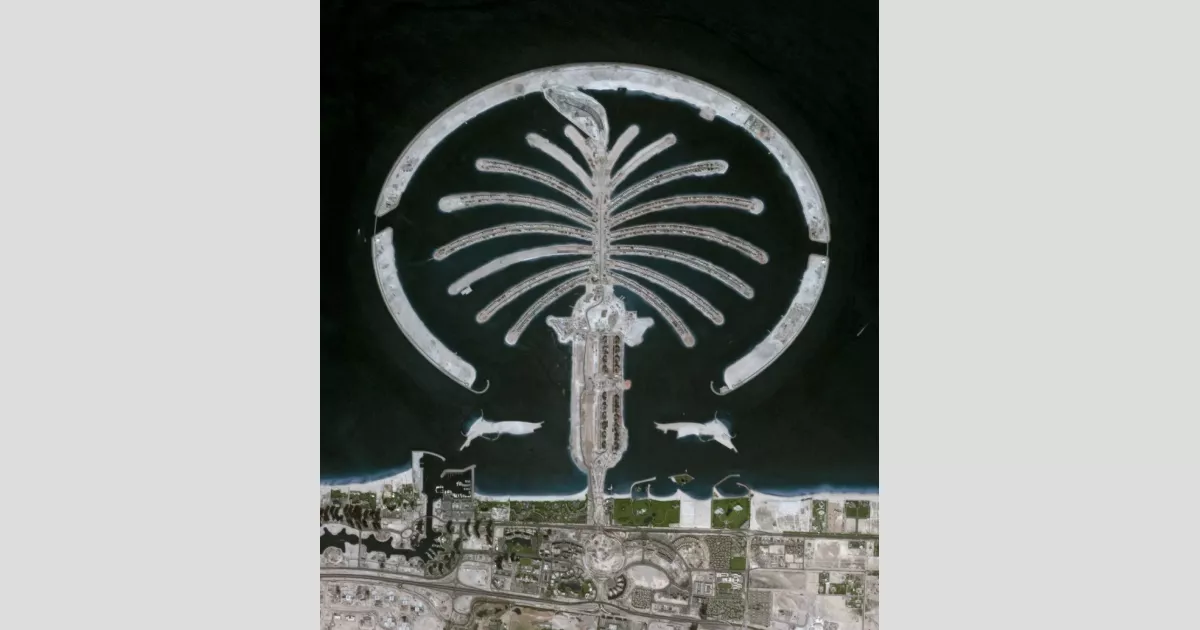The Palm Jumeirah, an artificial archipelago in Dubai, UAE, is a remarkable feat of engineering and a significant landmark. Part of the larger Palm Islands project, it increases Dubai's coastline significantly and houses over 25,000 residents. This ambitious development showcases Dubai's commitment to luxury, tourism, and architectural innovation.
June 2001: Construction Begins
Construction of the Palm Jumeirah began in June 2001.
2006: First Residents
In 2006, developers announced the handover of the first residential units on Palm Jumeirah.
October 2007: Handover and Residents
By October 2007, 75% of the properties on Palm Jumeirah were ready for handover, with 500 families already living there.
April 2009: Monorail Launch
The Palm Jumeirah Monorail, connecting the Atlantis Hotel to the Gateway Towers, began operating on April 30, 2009, becoming the first monorail in the Middle East.
2009: Hotel Openings
By the end of 2009, 28 hotels had opened on the Crescent of Palm Jumeirah.
2009: Sinking Concerns and Developer Response
In 2009, The New York Times reported on NASA measurements suggesting Palm Jumeirah was sinking. Developer Nakheel Properties denied structural issues and questioned the accuracy of the measurements.
2009: Property Density Controversy
In 2009, it was reported that the developer had increased the number of residential units on Palm Jumeirah from the initial announcement, leading to reduced space between properties and complaints from early buyers.
2020: Wildlife Increase During Pandemic
During the COVID-19 pandemic in early 2020, a surge in marine wildlife, including dolphins, was observed around Palm Jumeirah due to reduced human activity.
2022: Environmental Study
A study published in the journal Water in 2022, revealed that the construction of Palm Jumeirah had led to an increase in water-soluble materials, changes in the water's spectral profile, and a rise in surface water temperature around the island.
2022: Population Update
As of 2022, over 25,000 people were reported to be living on the Palm Jumeirah.
2024: Hotel Count Update
As of 2024, Palm Jumeirah has approximately 30 hotels spread across its trunk and outer crescent.
Trending

2 months ago Virginia Vallejo, Pablo Escobar's ex, reveals health struggle: Suffered a brutal stroke.

7 months ago Jake Gyllenhaal's 'Othello' Snubbed by Tony Awards Despite Box Office Success with Denzel Washington.
8 days ago World Cup 2026 Draw: Brazil in Group C, France's Path

Maisie Williams is an English actress who gained widespread recognition for her role as Arya Stark in the HBO series...

2 months ago Dakota Johnson's Epic Response to 'Naked Dress' Queries and Red Carpet Fashion
21 days ago SpaceX Falcon 9 Launches Starlink Satellites from Cape Canaveral on 150th Mission.
Popular

Candace Owens is an American conservative political commentator and author...

Ilhan Omar is an American politician currently serving as the...

XXXTentacion born Jahseh Dwayne Ricardo Onfroy was a controversial yet...

Tom Cotton is an American politician and Army veteran currently...

Kelsey Grammer is an accomplished American actor producer and singer...
The Kennedy Center Honors are annual awards recognizing individuals and...

